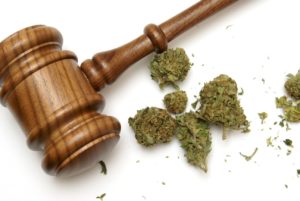 With half the country’s states (plus Washington, D.C.) currently allowing medical marijuana, it’s no surprise that the drug’s ripple effects are being studied—especially how it might be impacting Uncle Sam’s wallet.
With half the country’s states (plus Washington, D.C.) currently allowing medical marijuana, it’s no surprise that the drug’s ripple effects are being studied—especially how it might be impacting Uncle Sam’s wallet.
W. David Bradford, PhD, an economist at the University of Georgia, Athens (in the Department of Public Administration and Policy) co-authored a study with his daughter, Ashley C. Bradford (a graduate student in public administration at the same university) that looked closely at this subject. The study, appearing in Health Affairs (2016;35:1230-1236), analyzed Medicare Part D prescriptions from 2010 through 2013 (at which point, 17 states and Washington, D.C. permitted medical cannabis use).
The Bradfords’ study revealed that Medicare prescription medication use dropped in those states, and that the decrease accounted for an estimated savings to the government of more than $165 million in 2013.
Investigator reports surprise at the “significant” analysis results
“I was surprised that the results were consistently large and significant,” Dr. Bradford notes. “No matter how we specified the model, it really did not change the point estimates. The results were extremely robust, which is not a common phenomenon in my field.”
Although the father-daughter team possessed data on roughly 87 million doctor/prescription observations taking place during the four-year study window, they narrowed their focus to medications that address conditions known to be treated with cannabis: pain, anxiety, nausea, depression, sleep disorders, glaucoma, seizures, spasticity and psychosis.
“Pain is clearly the condition most treated by marijuana, and the indication with the best clinical evidence,” Dr. Bradford says. “The response we saw to medical marijuana for pain was larger by at least a factor of three than any of the other eight categories that we studied. Pain has perhaps been studied more commonly than the other eight conditions for marijuana.”
Although marijuana is still classified as a Schedule I drug and therefore illegal to use and possess on the federal level, Dr. Bradford acknowledges that its relatively wide use as a substitute for traditional pain meds is made possible by the feds generally leaving the states to oversee their medical cannabis programs without interference. “For quite some time,” he said, “the federal government has had a de facto policy of not actually enforcing federal law for medical marijuana in states where it is approved. Indeed, that has now been the subject of formal memos from the federal government.”
Dr. Bradford had not expected Medicare in particular to see such substantial savings attributed to medical cannabis use. “You might imagine that this older population would be less receptive to marijuana use,” he adds. “However, it is worth bearing in mind that roughly 16% of the Medicare population is not aged, but a younger, disabled population.”
When researchers crunched the numbers to reflect a USA in which medical cannabis was permitted in every state, the Medicare Part D savings came in at $470 million for 2013 and an even larger figure for this year. “As people view marijuana as more normal, I would expect even larger reductions in spending,” Dr. Bradford predicts.
As an alternative to opioid addiction, medical marijuana credited with saving lives
Since opioid drugs are commonly prescribed for pain, the Bradfords have also looked at how medical marijuana use might be impacting the country’s opioid epidemic. Along with two other university faculty members, they reviewed county statistics across the nation to gather numbers of opioid deaths from 2000 through 2014. In July, they submitted a paper—to a journal that has not been disclosed—that encapsulated their findings.
“We found that among states that adopt dispensary-based marijuana laws, there is a significant reduction in opioid deaths,” Dr. Bradford reports. “Our data from that study and the Medicare study suggest that medical marijuana laws are helping to potentially divert people from opioids.”
“Problematic use”: A less flattering side to the normalization of medical marijuana?
Despite the good press medical marijuana has been receiving of late, there are still researchers that advise caution and further study.
David Feingold, PhD, is an addiction psychologist and researcher with the addiction medicine services at Sheba Medical Center, in Ramat Gan, Israel. Referencing the Bradfords’ study, he agrees that the “bottom-line numbers are indeed convincing, associating legalization of medical marijuana with such a substantial decrease in the use of FDA-approved prescription drugs, including pain medications.” But he goes on to warn: “Regular use of marijuana affects cortical areas associated with motivation and learning and, therefore, may lead to problematic use, abuse and dependence.”
Dr. Feingold is the lead author of an article in Pain Medicine journal that explores problematic use of prescription opioids and medicinal marijuana in patients experiencing chronic pain (2016 Jun 26. [Epub ahead of print]). “Among pain patients treated with prescription opioids and medical marijuana,” he notes, “prevalence of problematic use was at least 17.1% and 10.6%, respectively. Hopefully, in the near future, we will see more standardized, patient-tailored indications for the use of medical marijuana, as well as careful screening for factors associated with problematic use.”
For more information/questions regarding any legal matters, please email [email protected] or call 310.203.2800.